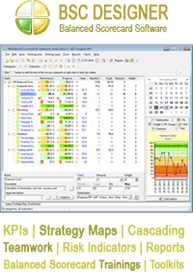Assessing you KPI Supply Chain System
Key performance indicators (KPI) are important management tools to measure the effectiveness of existing operating systems of organizations. To assess overall organizational performance, management should formulate a set of performance indicators for each vital area of activities the organizations carry out to attain predetermined goals and objectives. In a manufacturing or merchandising concern, you would expect a KPI supply chain system to play an important role in communicating to management the efficiency or lack of efficiency of the distribution system in place.
An efficient supply management system can translate to a competitive edge for business concerns. The use of advanced technology have opened greater opportunities for generating bigger volume of business by promoting more efficient supply ordering, tracking, and delivery systems. Through the supply chain and maintenance of data, businesses can now track individual packets through the supply chain allowing for delivery speed adjustments when needed.
They do not get that efficient overnight; however, technology certainly has provided businesses the means to meet customer demands easier, but it also resulted to a lot of data to process when managers have to come up with key performance indicator supply chain assessments.
Now, a good key performance indicators supply chain measure would reduce such voluminous data into more intelligible and concise statements from which managers base their assessment of whether the primary objective of the organization are being met or not, the primary objective being that supplies reach customers on time to maintain a healthy level of customer satisfaction rates. The KPI measure would be presented in numerical figures, usually in ratios or percentages.
In the process of reducing the millions of data generated by the supply chain system into that intelligible figure, some of the relevant data are lost. In other words, the quantitative presentation of the measure may only be partly true because some of the important facts about efficiency or inefficiency of the system cannot, of course, be captured by a numerical presentation. To illustrate, the system may be more focused on delivering fast selling supplies to customers on time while neglecting the slower moving ones. The ratio will naturally not reflect this and managers may not know that the satisfaction level of a segment of customers is plummeting, which can have negative effects in the future. A favorable measure output will most likely lull managers into thinking that all is well when there are brewing issues undetected in the background.
Evidently, mangers must determine what areas of the KPI supply chain system must be given more importance in determining its efficiency. Most often, the tendency is to reduce assessment into mere numerical figures, easy to read perhaps but lacking in information, which could prompt appropriate action. From the mountains of data the system is tossing onto managers’ laps, there is a need to pick which can explain and probably qualify the efficiency ratio being presented, especially when it is one, which managers like to look at. The ability of managers to settle on the crucial key performance indicators within the supply chain system can do a lot in ensuring that efficiency assessments ratios are accompanied by verifiable qualitative assessments.
—
If you are interested in KPI Supply Chain, check this web-site to learn more about dashboard supply chain.


